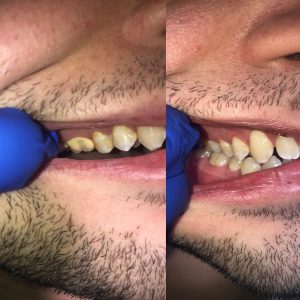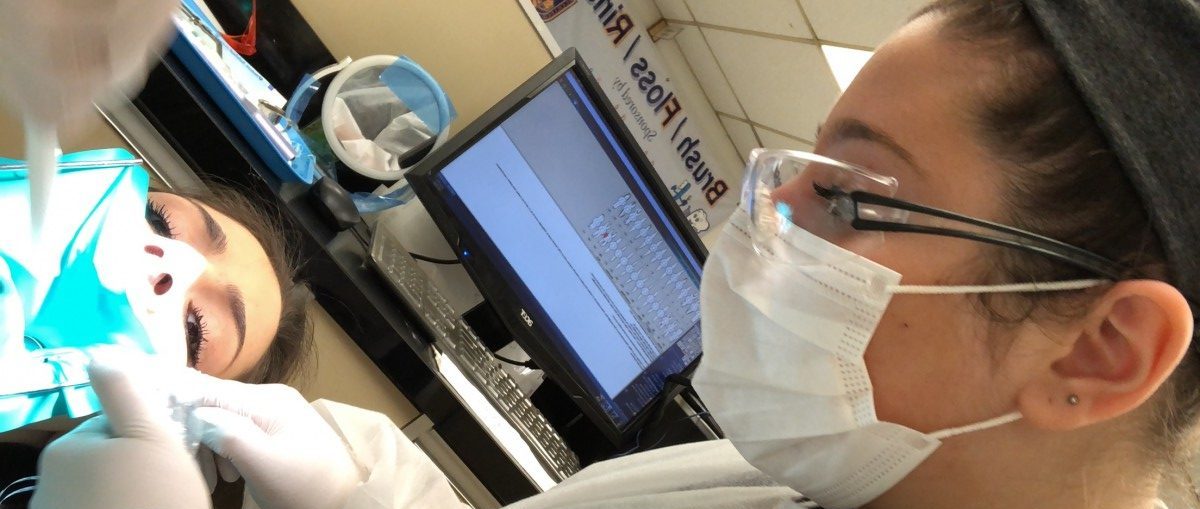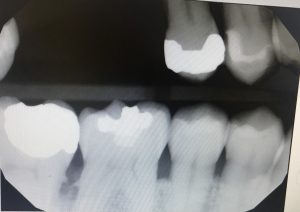Patient A. 28 year old white male .MH- Healthy WNL, Non-smoker. CC- Constant plaque buildup. Dental-No restorations present. Impacted wisdom teeth. Perio Type I
Patient presented with generalized red gingival margin with localized rolled margins. The patient stated that they are using a spin toothbrush 2x a day and flossing with a floss holder. I interviewed the patient if he was taking any supplements and what his daily diet consist of. The patient is into fitness and therefore takes many supplements and drinks alot pre workout and amino energy before working out. This was the second time treating the patient within 6 months.I changed his recall to 3 months due to the significant amount of tarter buildup within a short amount of time. The patient is aware of this occurrence. With the help of the doctor on the floor that day, we’ve come to the conclusion that since the patient does intense exercise, people tend to breathe heavily with an open mouth. The mouth becomes dry, and produces less saliva, which normally protects the teeth. We informed the patient and suggested he come more frequently for oral hygiene services.

Patient B. 68 year old African American female. MH- Hernia and stroke in December 2015, non-smoker. CC- Bleeding in the lower right quadrant when brushing or flossing. Dental- presented with a crown and multiple restorations. Perio Type II/ Localized III- minimal inflammation present around the gingival margin and interdental papilla of mandibular linguals.
The patient is on a 3 month recall. Every visit, we do a re-evaluation of probing depths from the previous visit. The patient had 4 horizontal bitewings prior to the visit. The probing depths present were localized to the posterior region ranging from 5-7mm. Based on the radiographic findings, minimal bone loss was present. After discussion with my professor, we decided this patient was a good candidate for Arestin treatment. After scaling, Arestin was administered in: #31MB/DL, #30MB/DL, and #15DL.Before placing Arestin the pocket depths for each of these sites were: #31MB-5, #31DL- 5, #30MB-5, #30DL-8, and #15DL-7. After placing Arestin the pocket depths decreased. #31MB-3, #31DL-4, #30MB-3, #30DL-6, and #15DL-5. The patient also reported that she experienced less bleeding in the lower right quadrant since treatment.




